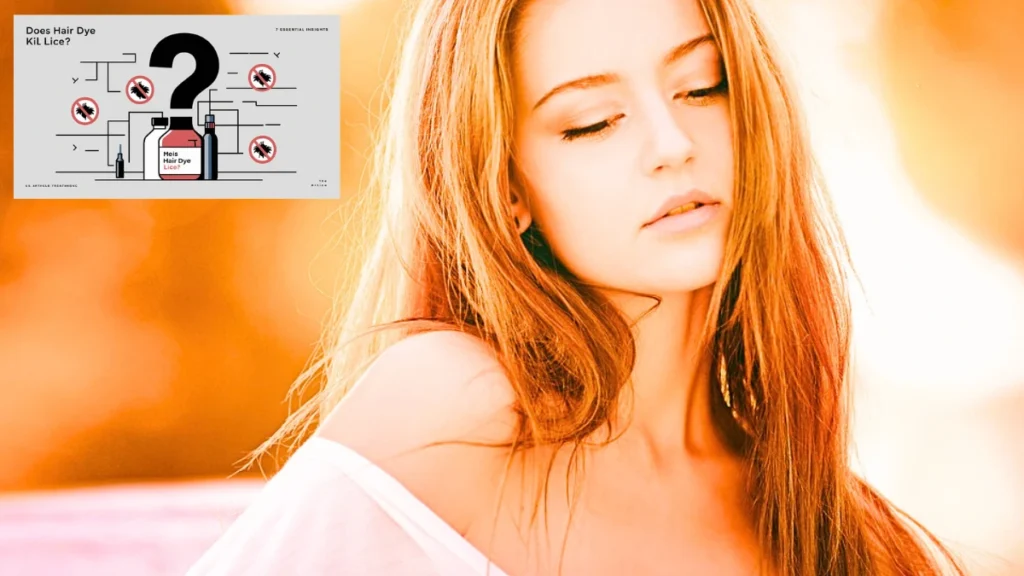Introduction
If you’ve ever faced the frustration of a head‑lice infestation, you may have wondered: Does hair dye kill lice? With dozens of DIY remedies floating around online, hair dye often comes up as a “quick fix.” But before you risk scalp irritation or damage to your hair, let’s separate myth from fact and explore safer, proven treatments.
What Are Head Lice?
Head lice are tiny, wingless insects that live close to the scalp, feeding on human blood. They spread primarily through direct head‑to‑head contact and are most common among school‑aged children. While lice themselves aren’t dangerous, they can cause intense itching, secondary infections, and social stigma.
How Hair Dye Works
Hair dye formulations typically contain:
-
Oxidative agents (like hydrogen peroxide) to open the hair cuticle
-
Ammonia or ammonia substitutes allow colour molecules to penetrate
-
Colour pigments that deposit inside the hair shaft
These chemicals are designed to alter hair colour, not to target or kill insects.
Can Hair Dye Kill Lice?
Despite anecdotal claims, hair dye is not a reliable lice treatment. Here’s why:
-
Chemical burn kills lice? The concentration needed to kill lice would also severely irritate or burn the scalp.
-
Dye seeps into eggs (nits)? Nits are protected by a hard, transparent shell that hair dye cannot fully penetrate.
-
Does colour change suffocate lice? Lice breathe through tiny openings; dye does not block these effectively.
While you might accidentally kill a few adult lice during dyeing, many will survive, especially the eggs.
Scientific Evidence and Expert Opinion
-
American Academy of Dermatology (AAD): No studies support hair dye as an effective pediculicide (lice‑killing agent).
-
Centres for Disease Control and Prevention (CDC): Recommends FDA‑approved shampoos and mechanical removal (combing), not chemical hair treatments.
Experts agree that relying on hair dye can lead to incomplete treatment and persistent infestation.
Safety Considerations and Risks
-
Scalp Irritation: Hair dye chemicals can cause redness, itching, and chemical burns if left on too long.
-
Allergic Reactions: PPD (para‑phenylenediamine) in many dyes can trigger severe allergies.
-
Hair Damage: Frequent dyeing weakens the hair shaft, leading to breakage and dryness.
-
False Security: Believing dye is enough may delay proper treatment, prolonging infestation.
Safer, Proven Lice Treatments
| Treatment Type | How It Works | Pros | Cons |
|---|---|---|---|
| Permethrin Shampoo | Neurotoxin for lice | FDA‑approved, widely available | May require repeat application; resistance is possible |
| Pyrethrin & Piperonyl Butoxide | Insecticidal plant extracts | Gentle, OTC | Not effective on all resistant lice |
| Dimethicone (Silicone‑based) | Coats and suffocates lice | No neurotoxins; safe for kids | Must comb out nits manually |
| Wet‑Combing | Physically removes lice/nits | Chemical‑free; recommended by the CDC | Time‑consuming; needs repetition |
Tip: Always follow package directions and repeat treatment after 7–10 days to catch newly hatched lice.
Preventing Future Infestations
-
Daily Combing: Use a fine‑tooth nit comb on wet hair.
-
Avoid Head‑to‑Head Contact: Discourage sharing hats, brushes, and headphones.
-
Wash Bedding & Clothing: Use hot water (130°F/54°C) and high‑heat drying.
-
Vacuum Furniture: Remove stray hairs that may carry lice or nits.
-

Does Hair Dye Kill Lice FAQs
Q1: Will bleach kill lice?
Bleach is far too harsh for scalp skin and is not a safe lice treatment. It can cause chemical burns.Q2: Can natural dyes (henna) kill lice?
No scientific evidence supports henna or other natural dyes as effective lice killers.Q3: How long does lice treatment take?
Most treatments require 10–20 minutes per application and a repeat session after 7–10 days.Q4: When can I see the results?
You may see fewer live lice immediately, but full eradication takes 2–3 weeks with proper follow‑up.
Conclusion
In summary, does hair dye kill lice? The answer is clear: hair dye is neither designed nor proven to effectively eliminate head lice. Relying on dye can lead to scalp irritation, allergic reactions, and a false sense of security, allowing lice to persist. Instead, choose FDA‑approved treatments and mechanical removal methods for safe, reliable results.
By understanding that does hair dye kill lice is a myth, you can focus on proven strategies—like permethrin shampoo, dimethicone treatments, and thorough wet‑combing—to fully eradicate lice and protect your family’s health.


1 thought on “Does Hair Dye Kill Lice? Myths, Facts, and Safe Alternatives in 2025”